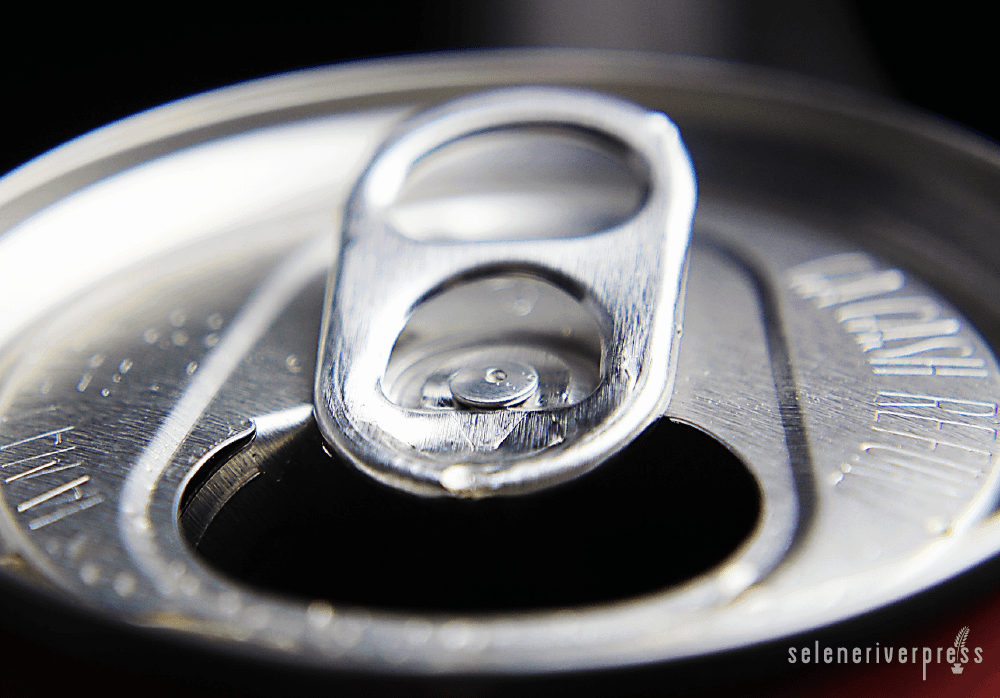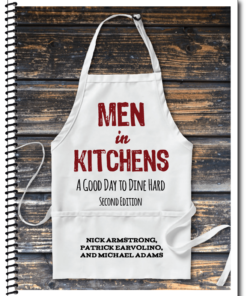Root beer.
Seeing those two innocuous words on a menu was usually all it took for me to glug can after can of sarsaparilla-scented sugar water.
It was, and still is, my favorite kind of soda. But now I have no problem limiting myself to a sip or two a month from a shared bottle of locally made, hand-crafted soda.
These days, I drink a lot more kombucha and homemade carbonated water, iced herbal tea, and straight-up water. I also eat a lot better (which I wrote about in Men in Kitchens), but I didn’t start out that way.
It just wasn’t enough to know that too much sugar was bad for me. I was deeply stuck in my habits, and no amount of internal mental prodding was enough to break me out of my rut. It wasn’t enough to read about why I shouldn’t guzzle liquid sugar at every opportunity—I had to create a plan of action to curb my addiction.
So what changed? How’d I kick my sugary sweet soda habit?
It was a years-long process that involved slow shifts in my habits and eventually lead to the following five tips.
#1. Get Yourself a High-Quality Water Bottle
I made drinking water fun again by—and this may sound really silly—buying a high-quality decorated water bottle.
I had three criteria I used when selecting mine:
- It had to be easy to clean (this is a must, or the habit will take up more time than it’s worth).
- It had to be something I wanted to show off (in my case, superhero themed).
- It had to “just work.” No weird parts, nothing that could crack or leech into the water, nothing that would fall apart. It also had to fit into the cup holder on my car and just be generally hassle-free.
The combination of these three things reinforced my efforts to carry around ready-to-drink water on a regular basis.
Because I didn’t have to spend all day cleaning it for the next use, and because I bought more than one, it was easy to incorporate filling my water bottle before I left the house into my daily routine. That meant I’d always have at least one liter of water with me wherever I went, and I could refill my bottle on the fly from any water fountain (not recommended if you’re avoiding chlorinated water). I also received a lot of comments from fellow fans of whichever superhero I was toting around that day—a nice incentive to continue carrying it with me.
When you’re used to flavorful or sugary stuff, plain water can feel like a chore to drink, so do your best to spice it up with a splash of cranberry, lime or lemon juice, cucumber or ginger slices. Even a few muddled raspberries can do the trick.
#2. Take It Slow
It was a slow transition from soda to sparkling juice and then from sparkling juice to flavored, carbonated water.
The Sanpellegrino sparkling juice, to be precise, still has too much sugar (20 grams) to count as anything other than a treat. But this is still half the amount in a Mugs (43 grams) or A&W (45 grams) root beer. When you’re battling bad habits, going cold turkey isn’t a winning strategy—so curb step by step.
If you’re lucky enough to live near a Trader Joe’s, you can try their SpinDrift sparkling waters. These are flavored with fruit (not artificial flavors) and have only 2 grams of sugar per can. They taste amazing, are sweet enough to make you do a double-take at the nutritional information, and are an easy way to remove a large volume of sugar from your daily intake.
Are these substitutes expensive? Yeah. You’re not gonna get your hands on them for a quarter or two. But medical issues from too much sugar are expensive, too— you’re just kicking that can down the road 50 cents a pop, so to speak.
Another stepping stone to try at a place with fast food is switching from fountain drinks to bottled, or at least from a medium or large cup to a small or kid’s cup. This will help you control your portions in most cases. For sit-down restaurants, you can augment your soda with iced tea or lemon water and hold yourself to the rule: one sip of soda for one sip of tea or water.
#3. SodaStream, Anyone?
There’s no other way to put this: when my wife gifted me a SodaStream, I literally tripled my daily water consumption almost overnight. At first, I added a few drops of lime juice to each bottle, but over time I realized I just didn’t need it. The carbonation alone provided enough effervescence to keep it interesting.
Also, it’s just plain fun to make. My kiddo regularly asks for “fizzy water” to supplement his milk at dinner time, and half the reason is because he gets to help make it—you can see the CO2 being injected into the water and bubbling up, then the water in the bottle bubbles as you drink it, and so on.
#4. Check Your Latte Habit
I switched from flavored lattes to flat whites when I ordered coffee, and I also upgraded my coffee habits at home.
A flat white is unflavored microfoamed milk with espresso poured through so it disperses for a smooth balance of espresso, foam, and milk. Flavored lattes, on the other hand, can contain a ton of sugar (unless you get them unflavored). I stopped drinking them because it’s no good to jump from one sugar source to another. Trying not to replace my soda sugar with latte sugar was, and continues to be, by far the hardest battle I’ve fought so far, but awareness is a great tool. Now that I’ve done without it for a while, it’s easy to identify when something has too much sugar.
#5. Add Kombucha
In Fort Collins, we’re lucky enough to have three local kombucha brewers that are regularly available at restaurants around town. More than that, these brewers provide a slew of inspiration for home-brew flavors. Kombucha is an acquired taste, but flavors like grapefruit apple, ginger blueberry, and spiced pear make the introduction an easy one.
While you can buy kombucha from stores, it’s also easy to make at home. And though it contains sugar, it’s typically less than 4–6 grams per serving, depending on the juice used to feed the fermentation process. Most of that sugar gets converted into lactic acid—great for your gut health. One serving is typically enough to satisfy a latent soda craving.
Kombucha is a live drink, that is, it’s fermented tea with a culture of yeast and bacteria and typically not pasteurized. Before you turn your nose up too much, guys, remember that beer and wine are also fermented (with yeast), vinegar is created using bacteria, and probiotic yogurt has live bacteria added back in after pasteurization. The fermentation process creates some nutritional benefits by way of lactic acid, B vitamins, and folic acid.
As with anything, where the ingredients are sourced, what conditions go into its creation, and how the kombucha is made are all important, so do your homework before you buy or DIY. Poorly or improperly prepared kombucha can make you sick.
A Last Word on Breaking Bad Habits
It’s the little things that make or break a habit. If you forget to order a kid’s size cup, just fill it up halfway. If you slip up and snag a soda at a party, don’t beat yourself up, just remember to keep your water bottle with you next time.
Habits—both good and bad—take a long time to form, and much like the parable of the two wolves, the habit that survives is the one you feed.




Great post, Nick! Love these tips.